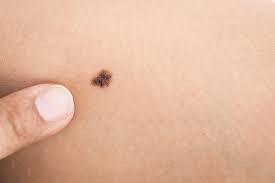Birthmarks are common skin pigmentation abnormalities that occur in many individuals. These skin markings are caused by the clustering of pigment cells, blood vessels, or other tissues beneath the skin. Although they do not pose any medical risks, many people may choose to remove them for cosmetic reasons. The following article will discuss various methods of removing birthmarks, from home remedies to surgical procedures.
Home Remedies
Home remedies can be effective in removing some birthmarks. However, it is important to note that these remedies have not been scientifically proven and may not work for everyone. Some common home remedies include:
- Lemon Juice: Lemon juice contains citric acid, which may help lighten some birthmarks' pigmentation. Apply fresh lemon juice to the birthmark and leave it on for 10-15 minutes before washing it off with warm water.
- Aloe Vera: Aloe vera has anti-inflammatory properties that may help reduce some birthmarks' appearance. Apply aloe vera gel to the affected area and leave it on for 30 minutes before washing it off with warm water.
- Apple Cider Vinegar: Apple cider vinegar contains acetic acid, which may help to fade some birthmarks. Mix equal parts of apple cider vinegar and water and apply the solution to the birthmark using a cotton ball. Leave it on for 10-15 minutes before washing it with warm water.
Medical Procedures
If home remedies do not work or are not suitable, several medical procedures can be used to remove birthmarks. These procedures should only be performed by a qualified medical professional and may be accompanied by some side effects. Some common medical procedures include:
- Laser Therapy: Laser therapy is a common procedure used to remove birthmarks. It involves using a high-intensity laser to destroy the pigment cells or blood vessels that make up the birthmark. This procedure is typically done on an outpatient basis and may require multiple sessions.
- Cryotherapy: Cryotherapy involves freezing the birthmark with liquid nitrogen, which destroys the abnormal cells. This procedure is usually done in a doctor's office and may cause discomfort or scarring.
- Surgery: Surgery is another option for removing birthmarks. This may involve cutting out the birthmark or using a scalpel to scrape away the top layer of skin. This procedure is typically done under local anesthesia and may leave a scar.

Precautions and Risks
It is important to remember that not all birthmarks can be removed; even if they can, there may be risks associated with the procedure. Before undergoing birthmark removal, discussing the procedure with a qualified medical professional and understanding the potential risks and benefits is important. Some potential risks associated with birthmark removal include:
- Scarring: Depending on the procedure used, there may be a risk of scarring or skin discoloration.
- Infection: Any medical procedure risks infection, particularly if the skin is broken.
- Pain and Discomfort: Some procedures, such as cryotherapy or surgery, may cause pain or discomfort during or after the procedure.
- Recurrence: In some cases, birthmarks may recur after removal.
Laser Therapy
Laser therapy is a popular method for removing birthmarks, as it is a relatively quick and non-invasive procedure. It involves using a high-intensity laser to target the pigment cells or blood vessels that make up the birthmark. The laser works by emitting a beam of light that is absorbed by the pigment cells, causing them to break down and be absorbed by the body's immune system.
Cryotherapy
Cryotherapy involves freezing the birthmark with liquid nitrogen, which destroys the abnormal cells. The liquid nitrogen is applied to the skin using a cotton swab or spray, and the freezing process typically takes just a few seconds.
Surgery
Surgery is another option for removing birthmarks. This may involve cutting out the birthmark or using a scalpel to scrape away the top layer of skin. This procedure is typically done under local anesthesia, and the patient may be given sedation to help them relax. Surgery may be the best option for large or deep birthmarks that cannot be treated with other methods. However, it carries a scarring risk and may require a longer recovery period than other procedures.

Chemical Peels
Chemical peels involve applying a chemical solution to the skin, which causes the top layer of the skin to peel away. This procedure can lighten some birthmarks' pigmentation, but it may require multiple treatments. Chemical peels can be done on an outpatient basis, and the patient may experience some redness and peeling of the skin after the procedure. Avoiding sun exposure during the healing process is important, as the skin may be more sensitive to UV rays.
Conclusion
It is important to discuss the options with a qualified medical professional and understand the potential risks and benefits of each procedure before deciding. With the right approach, it is possible to safely and effectively remove a birthmark and achieve the desired results.




